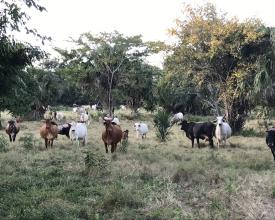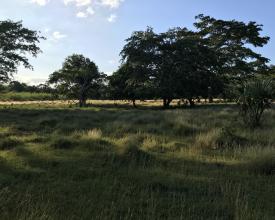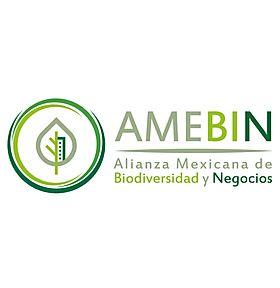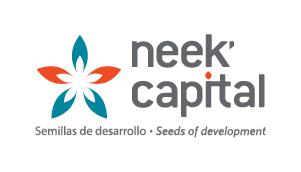
Carne del Monte promotes sustainable livestock farming in Mexico
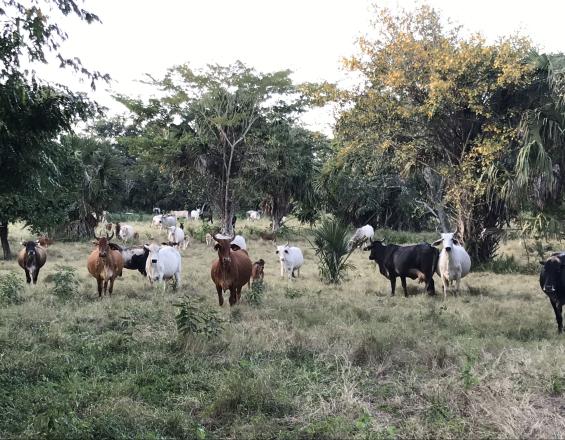
Neek 'Capital is a company builder that was born in 2017 with the mission to create Mexican startups with growth potential, dedicated to the implementation of sustainable use of energy, water, food systems and biodiversity on a large scale. The goal was to create companies aimed at solving the challenges posed by the sustainable use of natural resources in a climate-constrained world.
Through our production, processing and marketing operations, we seek to regenerate the countryside as a sustainable source of high quality animal protein and to invest directly in the restoration of the Yucatecan rainforest.
We seek to be an example of sustainability through the use of regenerative production systems that are maintained in the long term, thus improving producers' income and the agro-ecological quality of their cattle ranches.
Context
Challenges addressed
Socially, while Neek Capital already has a group of producer partners, the scalability and replicability of the project is subject to social challenges that include:
- A disjointed value chain that operates to benefit an oligopolistic structure.
- A livestock sector with participants reluctant to change their fattening practices in the absence of economic incentives from buyers.
- Reluctance to transform the working style of cattle ranchers stemming from a perceived "high opportunity cost" given that intensive cattle management requires greater supervision and control in ranch operations.
Economic:
- Lack of access to financing and venture capital for project design and start-up has been a major challenge. Carne del Monte has been financed solely with equity capital from Neek Capital and its partners, limiting our ability to execute to the resources available.
Location
Process
Summary of the process
Builiding Blocks (BB)
BB1 Convincing producers to adopt regenerative animal husbandry methods
BB2 Collaboration scheme with farmers
BB3 Understanding of the various customer segments and their expectations
Understanding and profiling the various customer segments (BB3) is fundamental to define the best way to integrate and communicate the value of the product to the customer. This increases the possibility of triggering sustained demand. Without this demand it is not possible to generate scaling at the landscape level.
In addition, the scaling up of environmental restoration through regenerative livestock farming also depends on BB1 and BB2. Not only must producers be convinced of the economic and environmental benefits of changing their livestock practices, but the right incentives must also be put in place to allow producers to migrate and benefit from regenerative livestock in the short term.
Building Blocks
Convincing producers to adopt regenerative livestock husbandry methods
The purpose of BB1 is to convince producers of the economic benefits of regenerative ranching (in particular SSPi).
Regenerative ranching requires the producer to modify: the way he invests and operates his ranch, as well as livestock management.
Enabling factors
- Clearly present the economic advantages, even as infrastructure investment priorities change.
- Recognize the importance of investing both in the conversion to a silvopastoral system and in infrastructure that facilitates intensive livestock management (e.g. more fencing and/or electric fencing to reduce paddock area, invest in more water troughs to improve animal weight gain).
- Leverage on the experiences of pioneer cattle producers who have already converted their ranches.
Lesson learned
- Producers are not accustomed to investing in the regeneration of their ranches. The cost of converting to a silvopastoral system is perceived as an expense that detracts from their ability to invest in more cattle. "We are not forestry producers" is the typical response from producers.
- Even when the silvopastoral system is implemented, intensive livestock management requires more initial effort on the part of the ranch operating team, particularly at the beginning.
- Demonstrate the economic benefits of regenerative livestock through visits to converted ranches.
- Practical capacity building for producers.
Collaboration schemes with farmers
The purpose of BB2 is to identify ad hoc collaboration mechanisms with producers that consider their technical and financial needs, as well as their business management capabilities.
Enabling factors
- Define mechanisms that provide certainty to producers regarding the price, timing and conditions of the purchase in advance.
- To be able to finance the producer under a scheme that makes sense to him and allows him to have real profits.
Lesson learned
- Collaboration mechanisms should be flexible and varied to adjust to the reality of a wide range of producers.
- For producers with less than 10 head under fattening, collaboration mechanisms should include financing schemes.
- Sustainable sharecropping has proven to be a viable mechanism for small producers.
- Be able to adapt collaboration schemes.
Understanding different customer segments and their expectations
The purpose of BB3 was to understand the consumer's specific preferences and willingness to buy with respect to price, presentation, product characteristics and sustainable form of production.
Enabling factors
- Conduct ongoing market price comparison analysis.
- Validate consumers' willingness to buy for various price ranges and product presentations.
- Identify specific outlets and channels to reach the right consumer segments.
Lesson learned
- There is a segment of customers willing to pay a higher price for meat that is healthier for them and has less environmental impact.
- Market trends with respect to the various presentations and commercial cuts of the product are fundamental for the economic viability of a sustainable product.
- Building alliances with channels is essential to validate the product's value offer.
Impacts
Environmentally:
In grazing or already intervened areas, intensive silvopastoral systems (SSPi) generate several positive impacts to the environment:
- The system increases biodiversity and strengthens ecological relationships between diverse species of grasses, shrubs and trees used to feed livestock.
- The ecology of the SSPi contributes to the regeneration of degraded soils by facilitating nitrogen fixation through leguminous species (e.g. leucaena) and by contributing organic material to the soil (e.g. animal excreta).
- The shrubs and trees used generate more shade, facilitating moisture retention and reducing transpiration.
- SSPi can be integrated with timber and non-timber agroforestry systems, increasing plant biodiversity.
- They increase livestock productivity per hectare, freeing up grazing area to allow natural forest regeneration.
Socially:
Carne del Monte's collaborative model with partner ranchers provides the following social benefits:
- They ensure a steady income to ranchers by facilitating the ongoing purchase of silvopastoral cattle.
- In some cases, it finances ranchers with economic needs through prepayment schemes for fattening cattle.
Economically, it pays 2% above the auction sale price in the region, in addition to avoiding transportation costs.
Beneficiaries
Producer members have restored 250 ha of degraded pastures in the last 5 years.
- More certainty regarding the price at which they will sell their cattle.
- Increased producer income between 5 and 10% per kg of standing cattle.
- Increased productivity
Sustainable Development Goals
Story
Neek' Capital is the result of the joint work of the co-founders of Conversa Creativa and Ithaca Environmental, Adriana Abardía and Jose Castro. Carne del Monte is the first project built by Neek' Capital that can already demonstrate a positive impact on biodiversity by supporting silvopastoral producers who are restoring their ranches, while providing consumers with a healthier and more sustainable product.
They worked on the development of the Climate Change Fund for the Yucatan Peninsula in Mexico, where a financial instrument needed to be created in a regional context involving the governments of three states. The fund included a portfolio of projects that was approved by key local stakeholders, which helped them identify funding sources and investment strategies that ended up being crucial in response to the climate change policies that have recently been formalized in the Yucatan Peninsula.
Given the regional urgency for forests and ecosystems to be managed sustainably, the result of the collaboration was an innovative fund that has the potential to attract international and national public and private funding sources, providing viable projects to be launched specifically through the various financial mechanisms needed in rural communities.
This experience and the business opportunities they identified in the Yucatan Peninsula over the years led them to found Neek' Capital. Neek's means seed in Mayan.
Our vision for the future, and next steps, would be:
- Identify appropriate channels for consumer awareness of the product's value proposition (marketing).
- Identify distribution and product sales channels to increase volume.
- Reduce costs and conversion times to increase the area under restoration.
- Reach 15,000 ha of restored pastures by 2022.

